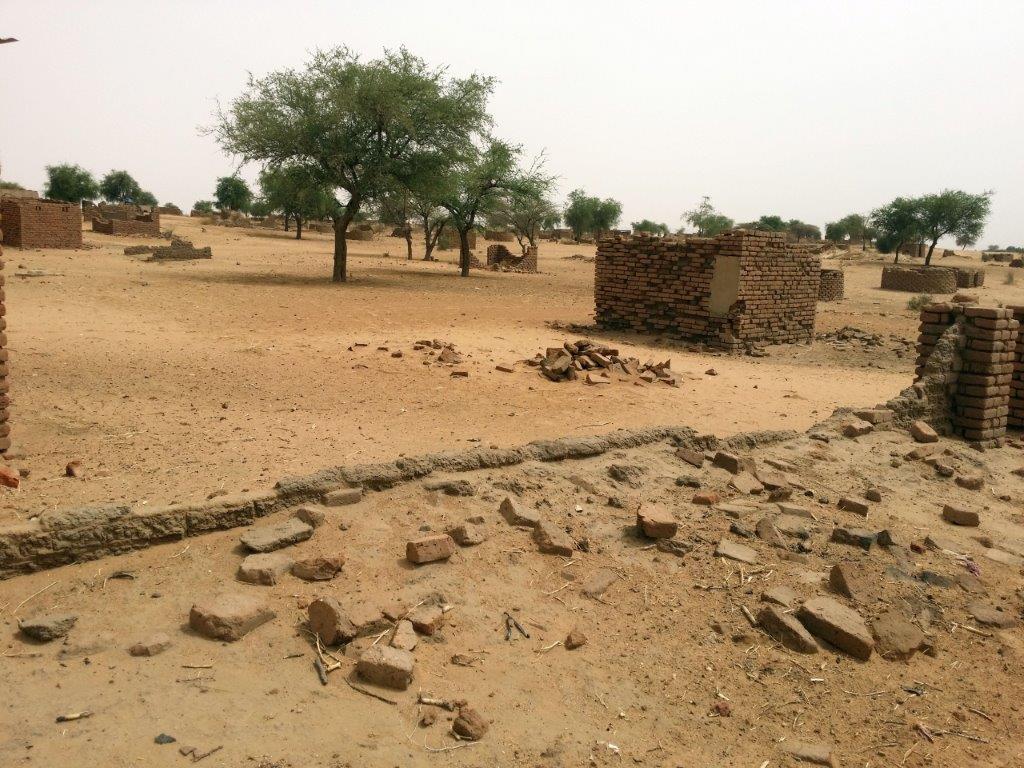Koert Lindijer has been a correspondent in Africa for the Dutch newspaper NRC since 1983. He is the author of four books on African affairs.
In Sudan, it is not only about the fight between generals Abdel Fattah al-Burhan and Mohamed Hamdan Dagalo, aka Hemedti. Many more parties are bidding on the marketplace.
Sudan’s politics have always resembled a marketplace, where, as in horse-trading, politicians and men in khaki pursue their own interests. That is how national unity was undermined, the country became fragmented and when two generals recently took up their weapons, Sudan even ended up in a deadly fight for power. “If this battle continues, Sudan will not split in two but will fall apart into many parts,” predicts Peter Adwok, a Minister of Higher Education of Sudan now living in South Sudan.
Nile Valley
Rulers in Sudan almost always originate from the Nile valley, from the water-rich areas in the otherwise bone-dry country. That only temporarily changed when in 1881 tens of thousands of fighters of the Mahdi, ‘the Chosen One’, driven by radical Islam, conquered the capital. “Most of Mahdi’s army came from western Darfur and Kordofan, hundreds of miles from the Nile,” says Adwok. “Since they were chased out by the British settlers, only leaders from around the Nile have ruled, such as current President Burhan and then President Omar al-Bashir.”
According to many Sudanese, this historical injustice must be rectified for the benefit of the marginalized parts of the country. This sense of injustice is particularly strong in remote Darfur, the region of Mohamed Hamdan Dagalo, alias Hemedti. “With Hemedti, the descendants of the Chosen One are back for the first time in Khartoum, in the center of power. The Nile Valley establishment feels threatened by this,” said Adwok. “This is one of the undercurrents in the current conflict, a competition between the center and the periphery.”
In Darfur, Hemedti predominates

Destruction in Darfur
The course of the battle thus far points to victories for Burhan’s army in the east and along the Nile. In Darfur, on the other hand, the men of Hemedti’s Rapid Support Forces predominate in towns such as Nyala and Al Fashar, controlling airports and military bases. If Hemedti were to flee Khartoum, he would therefore have his own power base there and could split Sudan in two.
But many civilians in Darfur do not support him. His fighters are of Arab descent and in 2003, in collaboration with Bashir’s government army, fought against rebel groups of African descent. After a peace deal negotiated by Hemedti in 2020, these groups moved into the cities and engaged in horse-trading. Despite the peace agreements, they have not yet been disarmed.
Minni Minnawi, leader of the Sudan Liberation Movement (SLM), warned in March that he would not disarm his fighters because of “ongoing recruitment campaigns” in Darfur. He pointed an accusing finger at Arab militias, adding: “The recruitment or mobilization of fighters means preparation for war.”
Shadow economy
Since independence in 1956, military governments have run Sudan, with only ten fragmented years of civilian rule. The military got used to playing a role not only in the government, but also in the economy, where they benefit from a network of shadow companies. Military and security forces control hundreds of large and medium-sized companies in gold mining, ranching, weapons, telecommunications, banking, construction and agricultural projects along the Nile. Hemedti’s militiamen and relatives earn well from their shares in banks and the gold trade in North Darfur.
According to estimates, after Bashir’s ouster in 2019 due to a popular uprising, only 18 percent of the country’s revenues ended up with the state. The dismantling of this ‘deep state’ built up under Bashir’s Muslim Brothers has been one of the biggest sticking points in recent months in both talks about the division of power between civilians and the military, and now between the factions in the army.
Fundamentalists
The fundamentalists make up only a small percentage of the population, but are well organized, and many Sudanese believe they play a role behind the clashes between Hemedti and Burhan that began on a Saturday in April. Numerous fundamentalist generals who bet on Burhan serve in the army. Hemedti now presents himself as a fighter against the fundamentalists. He asked his international “friends” in the United Arab Emirates to unite against Burhan, whom he called a “radical Islamist” who “bombs civilians from the air” – a method already used during the wars against rebels in Darfur, in which his militia took part. “We are fighting against radical Islamists who want to keep Sudan isolated, in limbo, and far from democracy. We will continue to pursue Burhan and bring him to justice,” Hemedti said.
The Forces for freedom and change, a civilian group that until last month was negotiating with the military over a transfer of power to a civilian regime, referred to a role of fundamentalists in a statement saying it was “raising the alarm about the plans of members of the former Bashir’s party to plunge the country into a devastating war aimed at blocking the path to a civil-democratic transition. They started this war, and they are the ones who hope to reap its results.”
“The rise of the fundamentalists and the rise of Darfurian fighting groups in Khartoum are now the main undercurrents, but other outlying areas are also stirring,” says Peter Adwok. “Whereas in the past the rulers of the Nile Valley went to the marginalized areas and handed out gifts, the leaders from those regions now come to Khartoum themselves and claim their share on tribal lands. The fragmentation was already under way before this war between generals started”.
The horse-trading within Sudan’s elites sidelined ordinary citizens, but sometimes also prevented conflict. Perhaps Burhan and Hemedti may still come to a deal in such a way, because they share interests. Both have blood on their hands, millions in their pockets and crimes on their conscience. If they ever have to hand over power to a civilian regime, it could cost them their necks.
This article was first published in NRC on 21-4-2023

